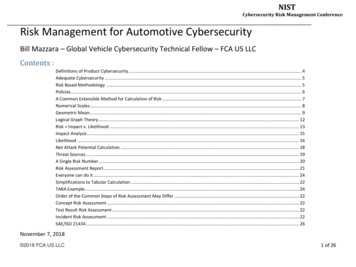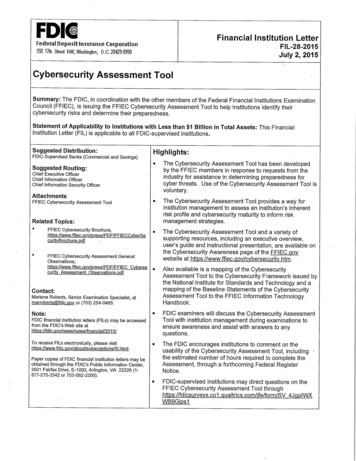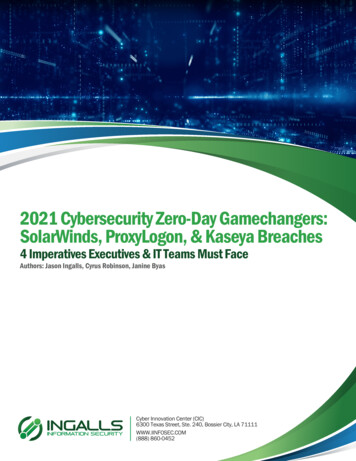
Transcription
2021 Cybersecurity Zero-Day Gamechangers:SolarWinds, ProxyLogon, & Kaseya Breaches4 Imperatives Executives & IT Teams Must FaceAuthors: Jason Ingalls, Cyrus Robinson, Janine ByasCyber Innovation Center (CIC)6300 Texas Street, Ste. 240, Bossier City, LA 71111WWW.IINFOSEC.COM(888) 860-0452
In 2021, a series of cyberattacks using unknown vulnerabilities, called Zero-Days or 0-Days (pronounced “oh day”),changed the risk management calculations of operating Information Technology (IT) for businesses across allindustries, government agencies, and critical infrastructure organizations in the United States. These Zero-Dayvulnerabilities were unknown to exist by anyone except the criminals and nation-state-sponsored threat actors thatused them to gain access, steal data, and in some instances, cripple operations. 0-Day vulnerabilities are especiallychallenging to defend against because they are inordinately difficult to detect in production IT systems, and until thevendor responsible for fixing the security flaw identifies it and produces a patch, the vulnerable systems must beguarded against exploitation and compromise. Enter the rising trend in cybercrime - attackers going through yourvendors’ unknown vulnerabilities to get to your business’ critical data, perform espionage, target opportunities to grindoperations to a halt, and ransom access for payment.This rampant use of 0-days is a sea change from years past, when organizations who possessed knowledge of thesehidden vulnerabilities were loath to use them except in very strategic ways. For example, the Electronic FreedomFoundation’s exposé on Chinese espionage against the Uyghur diaspora identifies previously unknown vulnerabilitiesin the Apple iOS operating system that were used against dissidents to spy on them. This report was an early indicator(2019) of changing policy by nation-state threat actors to more frequent use of 0-days.1 It is the nature of cyberoffense and defense that tools and weapons proliferate rapidly.2 Therefore, the current use of 0-Days by criminalgangs is a natural progression from the known nation-state-sponsored use of them only two years ago.Life of a Zero Day VulnerabilityDiscoveryCybercriminaldiscovers aZero Dayvulnerability.Zero DaysWeaponizeCybercriminalcreates exploitto use thevulnerability totake controlover computersystems.AttackThe vulnerabilityis leveraged inlive attacks.Patch CreatedSoftwaremaker createsrules to fix theZero DayvulnerabilityVendorsFinding OutSoftwaremaker findsout about theZero Day.Patch DistributedUpdate isdistributed &the vulnerabilityis closed on thesystems runningthe software.Adapted from: tacks/1 “Watering Holes and Million Dollar Dissidents: the Changing Economics of Digital Surveillance”, retrieved in July 2021 omics-digital2 “Understanding the Proliferation of Cyber Capabilities”, retrieved in July 2021 ration-cyber-capabilities
An analysis of three different, recently devastating attacks leveraging 0-days indicates that the bar for effectivecybersecurity risk management must be raised across the board. Here, we review the SolarWinds, ProxyLogon, andKaseya attacks - each possible because the attackers had knowledge of an otherwise unknown vulnerability intrusted software.SolarWindsThe SolarWinds hack was initially discovered in late 2020. However, exploitation of the vulnerability continued into2021 and was of such magnitude that many users of the software (over 100 individual organizations, including 9Federal agencies) had some indication of unauthorized access and data theft.3 This attack leveraged a supply chaincompromise that allowed suspected Russian government-sponsored hackers to gain access to any IT network that theSolarWinds application servers were installed in. Because SolarWinds was a trusted, administrative application withprivileged access to data, servers, and networks, the attackers gained unfettered access to all assets that SolarWindsmanaged. Many organizations had to rebuild their IT environments from scratch, per guidance from the Cybersecurityand Infrastructure Security Agency (CISA).4ProxyLogonIn the days following the March 2, 2021 disclosure by Microsoft of a series of 0-day vulnerabilities that had beenleveraged by the HAFNIUM threat actor, over 30,000 organizations were attacked.5 This resulted in unauthorizedaccess and theft of email accounts, webshell malware installations, and even ransomware and cryptojacking attacks.6The HAFNIUM criminals demonstrated awareness of the threat advisory and rapidly escalated their exploitation of theExchange vulnerabilities, dubbed “ProxyLogon” vulnerabilities, to create the largest impact possible once disclosed. Inthis instance, it is important to note that many organizations completely ignored or were unaware that a patch wasavailable. The FBI carried out an extraordinary effort to leverage the same vulnerabilities to remove web shellbackdoors from ProxyLogon-compromised Exchange Servers.7 This highlights a Catch 22 of disclosing 0-days, evenwith a patch available; publication of a vulnerability can create massive impact as attackers rush to reap rewardbefore their opportunity is lost, as organizations also rush to apply the fix.KaseyaKaseya, a Remote Monitoring and Management (RMM) software tool used by hundreds of IT Managed ServiceProviders (MSPs), was leveraged by the REvil threat actor group to deploy ransomware and encrypt the computers ofup to 1,500 companies on July 2, 2021.8 This brazen use of several 0-day vulnerabilities in the Kaseya VSA applicationis another example of suspected Russian nationals targeting trusted software in order to deliver malware at-scale andransom victim environments. These attackers, as with the SolarWinds incident, relied on privileged access and risky,vendor-recommended configurations. As a result, many downstream victims were affected due to the widespread useof the tool. The capabilities that RMM tools provide IT companies also allow for essentially carte blanche access to anyenvironment it is installed in. MSPs do not always have the expertise necessary to configure these tools themost securely.3 “White House now says 100 Companies hit by SolarWinds hack, but more may be impacted”, retrieved in July 2021 larwinds-hack-100-companies-9-federal-agencies4 “Emergency Directive 21-01”, retrieved in July 2021 from https://cyber.dhs.gov/ed/21-01/5 “HAFNIUM targeting Exchange Servers with 0-day exploits”, retrieved in July 2021 3/02/hafnium-targeting-exchange-servers/6 “Analyzing attacks taking advantage of the Exchange Server vulnerabilities”, retrieved in July 2021 ange-server-vulnerabilities/7 “FBI blasts away web shells on US servers in wake of Exchange vulnerabilities”, retrieved in July 2021 rabilities/8 “Kaseya ransomware attack: 1,500 companies affected, company confirms”, retrieved in July 2021 e-attack-1500-companies-affected-company-confirms/
Top Cyberattacks ComparisonSimilarities and differences in major cyberattacks since December 2020December 2020March 2021July 2021Supply Chain (Vendor)Exchange 0-DaySupply Chain (MSP) 0-DayInjectingmaliciouscode etOn-premSolarWindsserverAPT29 GroupOn-premMicrosoftExchangeISS serverHAFNIUM Groupand othersLateralmovementto othernetworkassetsExploitingvulnerabilities to injectmaliciouscodeMSPsREvil GroupKaseyaagentupdate withinjectedREvilpayloadLateralmovementto othernetworkassetsAttack Timeframe: Months, YearsVulnerablesoftwaredistributedAttack Timeframe: Days, WeeksAttack Timeframe: MinutesAdapted from: a-supply-chain-ransomware-attack/MissionCritical AssetsyDThe special risk 0-days present to IT environments requires careful consideration of how to manage it. Historically,there’ve not been many available risk management controls marketed as point solutions for 0-days, because of thevarious ways that 0-day vulnerabilitiespresent themselves. For example, anThe 7 Layers of CybersecurityEndpoint Protection solution that might scanfor attempts to perform buffer overruns inanmLuaHapplication code and prevent such anyeerThexecution might be helpless against aSreetceumriidifferent technique that leverages a configurtyPerationchange to an application that allowsork Securitywteattackersto escalate their user privilegesNandpivottosensitive data. Where possible,Spoint ecurityit's important to adopt a defense-in-depthEndstrategy to detect and prevent unauthorizedation Securityplicactivity that may originate from exploitationspASecuritaof such vulnerabilities.taAdapted from: -7-layers-of-security/This requires a profound shift in the wayorganizations think about protecting dataand operations. It’s time to come to gripswith some critical realities:1 There is no silver bullet for keeping cybercriminals out. For those relying solely on antivirus for protection,it’s only a matter of time before you experience a breach. Antivirus is critical, but it should be seen as onepart of a comprehensive, defense-in-depth strategy for a cybersecurity program. At a minimum, organizations need a layered defense strategy implementing security at all levels: Human, Perimeter,Network, Endpoint, Application, and Data Security.9 Think of Swiss cheese slices. Each IT tool,employees, and a host of organizational factors introduce weaknesses into your environment.These Swiss cheese holes (vulnerabilities) are apparent and can be easy for hackers tonavigate. However, if you stack different slices of Swiss cheese up, although every
slice has its own holes, each layer provides coverage for the layers that precede and succeed it, creating asingle, more impenetrable fortification.2 Unmanaged security tools are not enough to secure organizations. The allure of Artificial Intelligence andthe marketing promises vendors may make regarding security software and hardware may convince organizations to believe that deploying a specific tool or stack of tools is enough to manage the risk that organizationsface. However, no matter how advanced and capable the toolset is, a “set it and forget it” cybersecuritysolution is a foolhardy one that promotes a false sense of security that can actually result in increased risk.Unmanaged security tools generate an exhaustive amount of data. Without human-in-the-loop management,tools break and fail to protect. Security tools require careful monitoring, fine-tuning, and meaningful contextby a skillfully trained human being. It is vital to rely on experts who understand how to configure, monitor, andrespond to the output of these tools.3 There is an imperative for security expertise at the executive level. Cybersecurity is a governance responsibility that belongs to leadership positions; however, individuals in these roles are often under-equipped tomake decisions about security. For midsize to enterprise-class organizations, investing and trusting in a ChiefInformation Security Officer, Chief Information Officer, or Chief Technology Officer is required to appropriatelysegregate duties and effectively establish a cybersecurity strategy with controls, policies, and proceduresaligned to organizational priorities. The world will have 3.5 million unfilled cybersecurity jobs by the end of2021 with an average growth rate of 31% for Information Security Analysts.10 Employing trained securityanalysts, Information Security Managers, and/or partnering with a trusted cybersecurity provider (differentfrom an MSP) are also serious investments to consider.4 Your IT budget is not the same as an investment in the security of your organization. Paying lip service toregulatory compliance will not protect organizations in today’s threat landscape. Traditional antivirus is nomatch for modern attackers who use more sophisticated techniques. Implementing control standards (NIST,CIS, ISO) and defense-in-depth requires both executive endorsement and monetary investment. Organizations face a choice: Make the necessary investments to build resilient IT systems now, or pay the price in theform of required security control implementation, ransom, litigation, business impact, and fines after a breachhas occurred.11The conversation around cybersecurity amongst executives and IT professionals must evolve. Cybersecurity encompasses a large ecosystem that requires its own mastery of the discipline, separate from IT administration. Threatactors, whether nation-state sponsored or independent criminal gangs, are exploiting gaps that result from immatureand underfunded security postures - and they are growing in sophistication, targeting more critical infrastructure andservices at a break-neck pace and critical scale. It is time to see investing smartly and effectively in cybersecurity, andbringing expertise around it to the decision-making table, as an existential imperative.9 “What Are The 7 Layers Of Security? A Cybersecurity Report”, retrieved in July 2021 -the-7-layers-of-security/10 Top 5 Cybersecurity Facts, Figures, Predictions, And Statistics For 2020 To 2021”, retrieved July 2021 or-2019-to-2021/and, “U.S. Bureau of Labor Statistics: Occupational Outlook Handbook - Information Security Analyst”, retrievedJuly 2021 from echnology/information-security-analysts.htm11 “Pay It Now or Pay It Later - Cybersecurity Always Collects its Dues”, retrieved in July 2021 r-cybersecurity-always-collects-its-due-rich/Cyber Innovation Center (CIC)6300 Texas Street, Ste. 240, Bossier City, LA 71111WWW.IINFOSEC.COM(888) 860-0452
Kaseya Kaseya, a Remote Monitoring and Management (RMM) software tool used by hundreds of IT Managed Service Providers (MSPs), was leveraged by the REvil threat actor group to deploy ransomware and encrypt the computers of up to 1,500 companies on July 2, 2021. 8 This brazen use of several 0-day vulnerabilities in the Kaseya VSA application
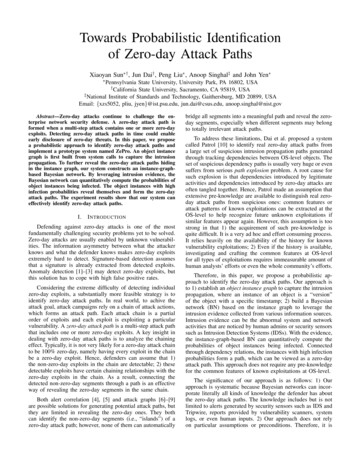

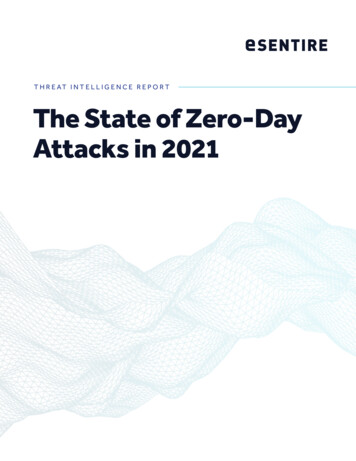
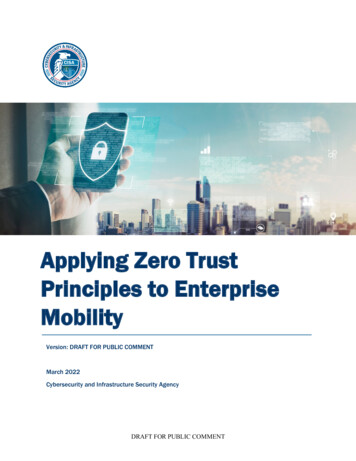
![Welcome [dashdiet.me]](/img/17/30-day-weight-loss-journal.jpg)

